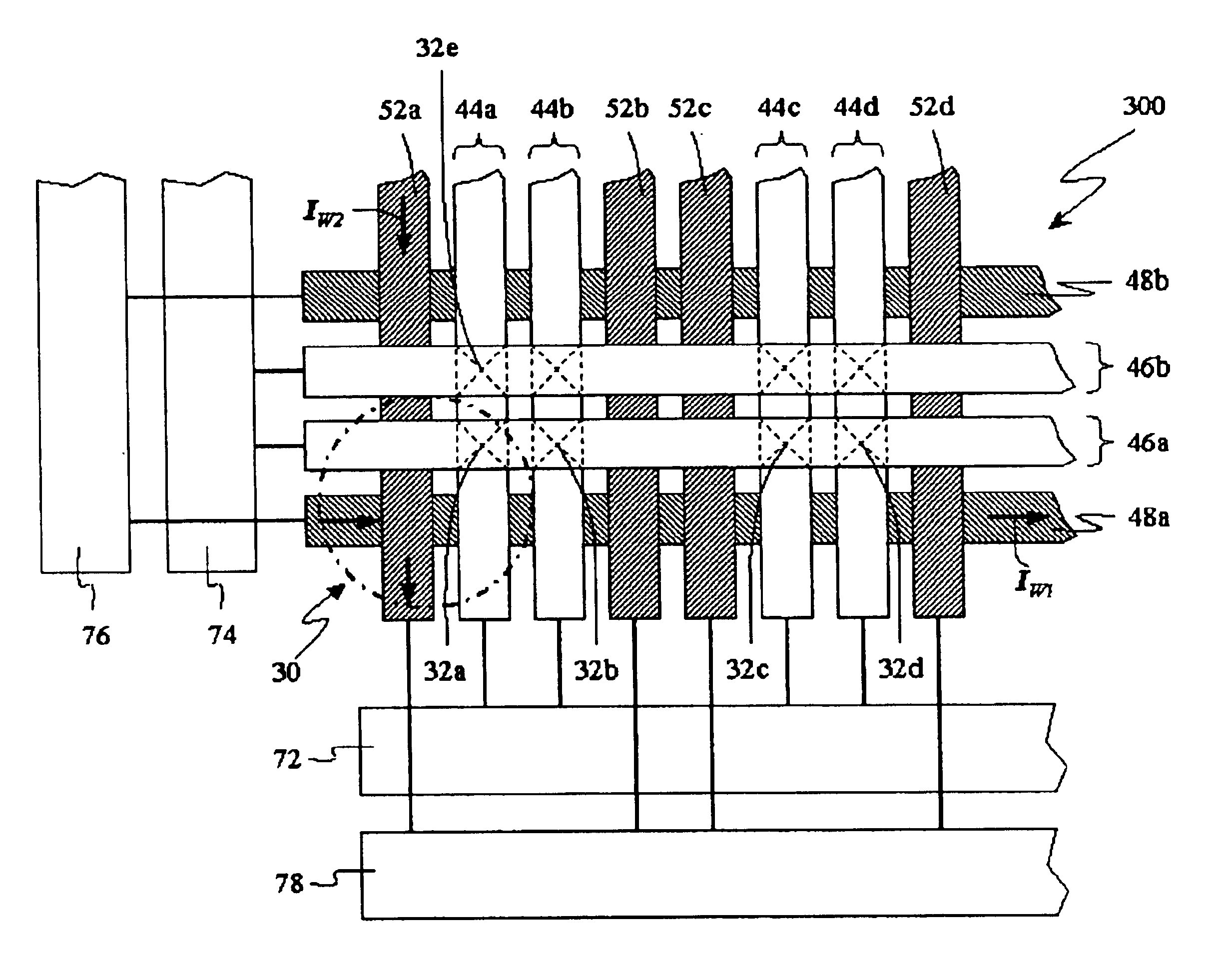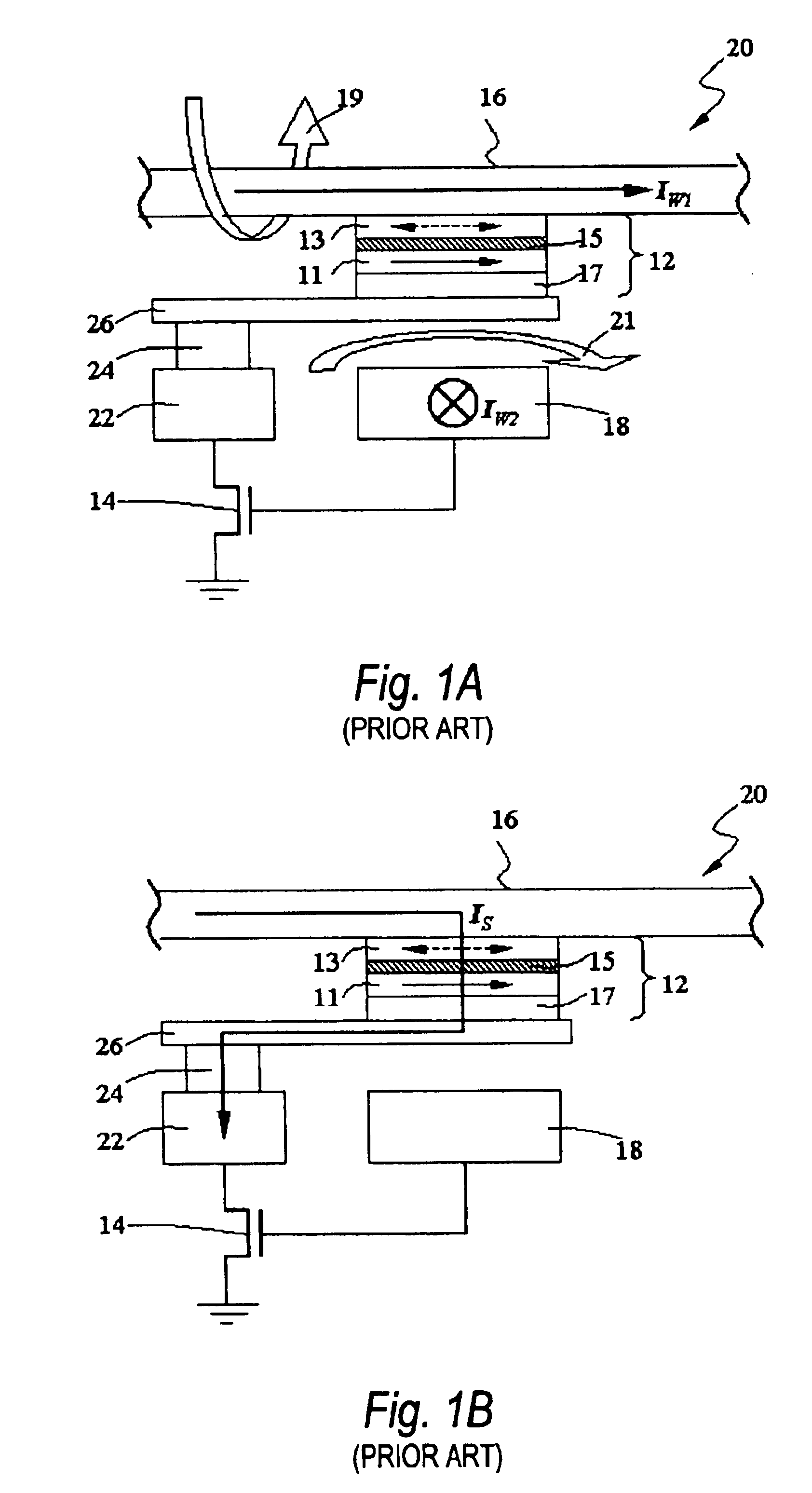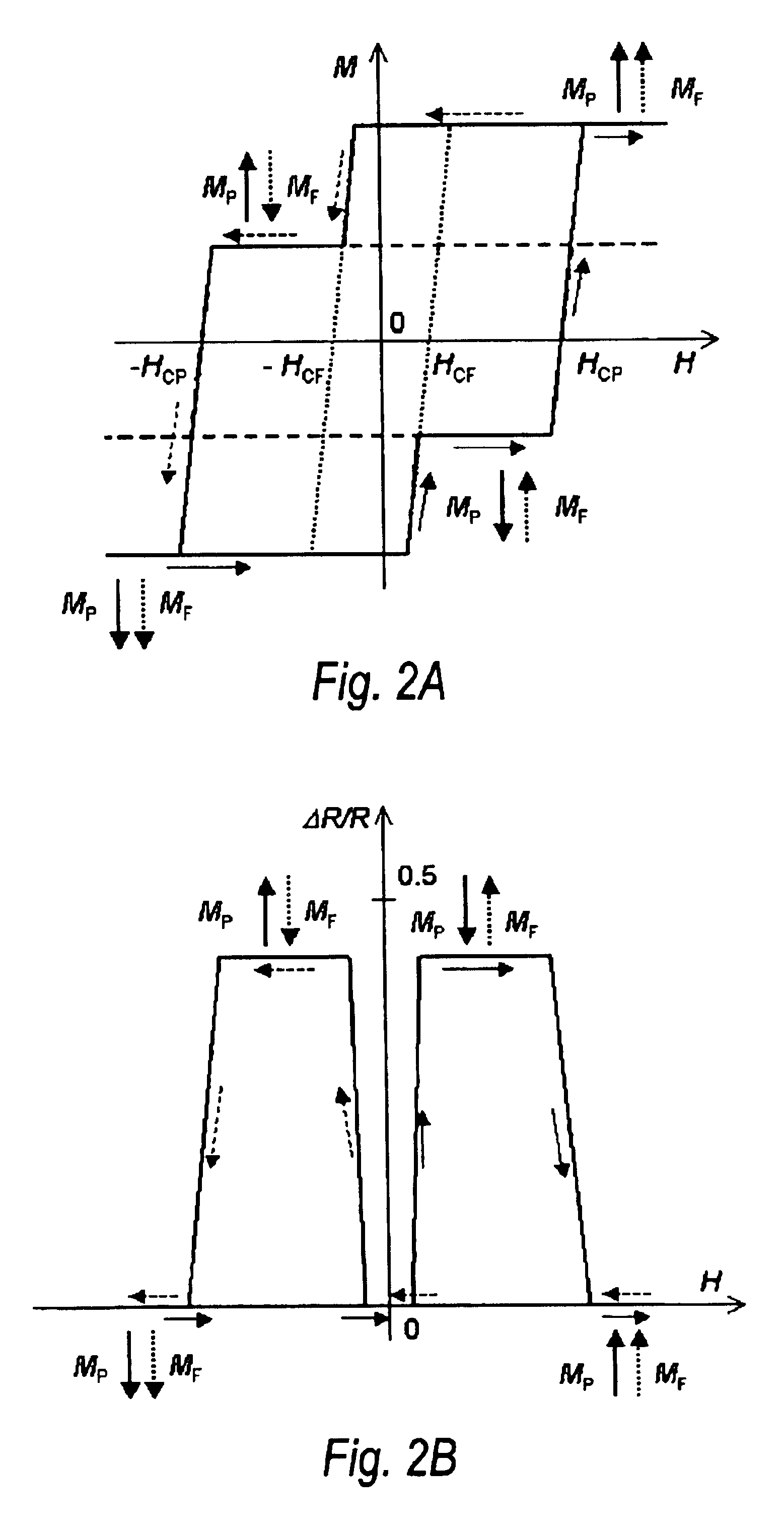Magnetic tunnel junction memory device
a magnetic tunnel junction and memory device technology, applied in the direction of information storage, static storage, digital storage, etc., can solve the problems of limiting the density of mtj cells in a mram array, affecting the stability of mtj elements with sub-micron dimensions at elevated temperature of operation, and affecting the stability of mtj elements with sub-micron dimensions, etc., to achieve addressing errors, high density, and improve spin-dependent tunneling
- Summary
- Abstract
- Description
- Claims
- Application Information
AI Technical Summary
Benefits of technology
Problems solved by technology
Method used
Image
Examples
Embodiment Construction
A MTJ memory cell of the present invention utilizes a phenomenon of a tunneling giant magnetoresistance in sandwiched magnetic and insulating layers. The memory cell employs a MTJ memory element formed by two magnetic layers with perpendicular anisotropy having different coercive forces, which are separated by a thin insulating layer as a tunneling barrier.
FIGS. 2A and 2B illustrate a MH-loop and a MR-curve of the MTJ element with the perpendicular anisotropy in the free and pinned magnetic layers when an external magnetic is applied perpendicular to a major plane of the layers. HCF and HCP is a coercivity of the free and pinned layers, respectively. Arrows denote orientation of the magnetization in the pinned and free layers. The dot arrow corresponds to the magnetization orientation in the free layer. The dash arrow represents the orientation of the magnetization in the pinned layer. A dot line in the FIG. 2A represents a MH-loop of the free layer. A dash line gives the MH-loop of...
PUM
 Login to View More
Login to View More Abstract
Description
Claims
Application Information
 Login to View More
Login to View More - R&D
- Intellectual Property
- Life Sciences
- Materials
- Tech Scout
- Unparalleled Data Quality
- Higher Quality Content
- 60% Fewer Hallucinations
Browse by: Latest US Patents, China's latest patents, Technical Efficacy Thesaurus, Application Domain, Technology Topic, Popular Technical Reports.
© 2025 PatSnap. All rights reserved.Legal|Privacy policy|Modern Slavery Act Transparency Statement|Sitemap|About US| Contact US: help@patsnap.com



